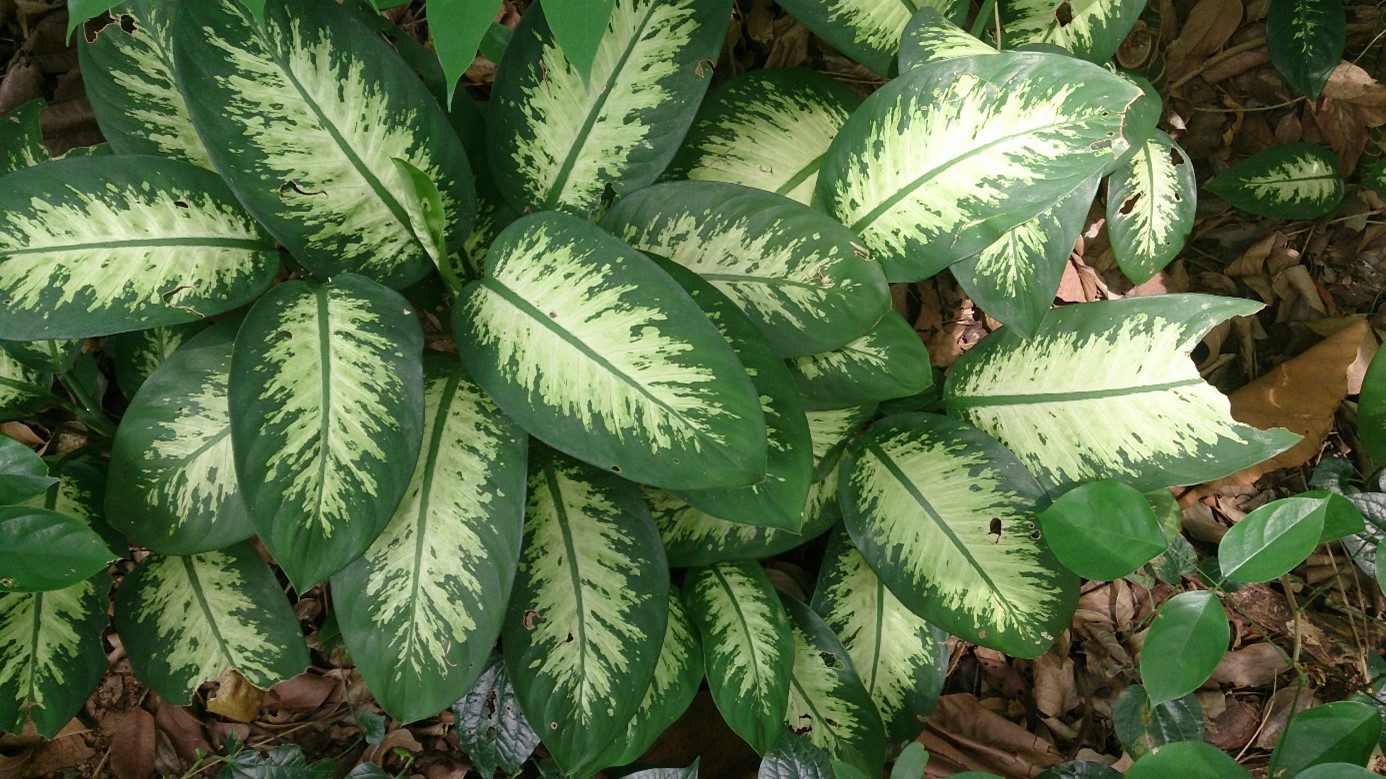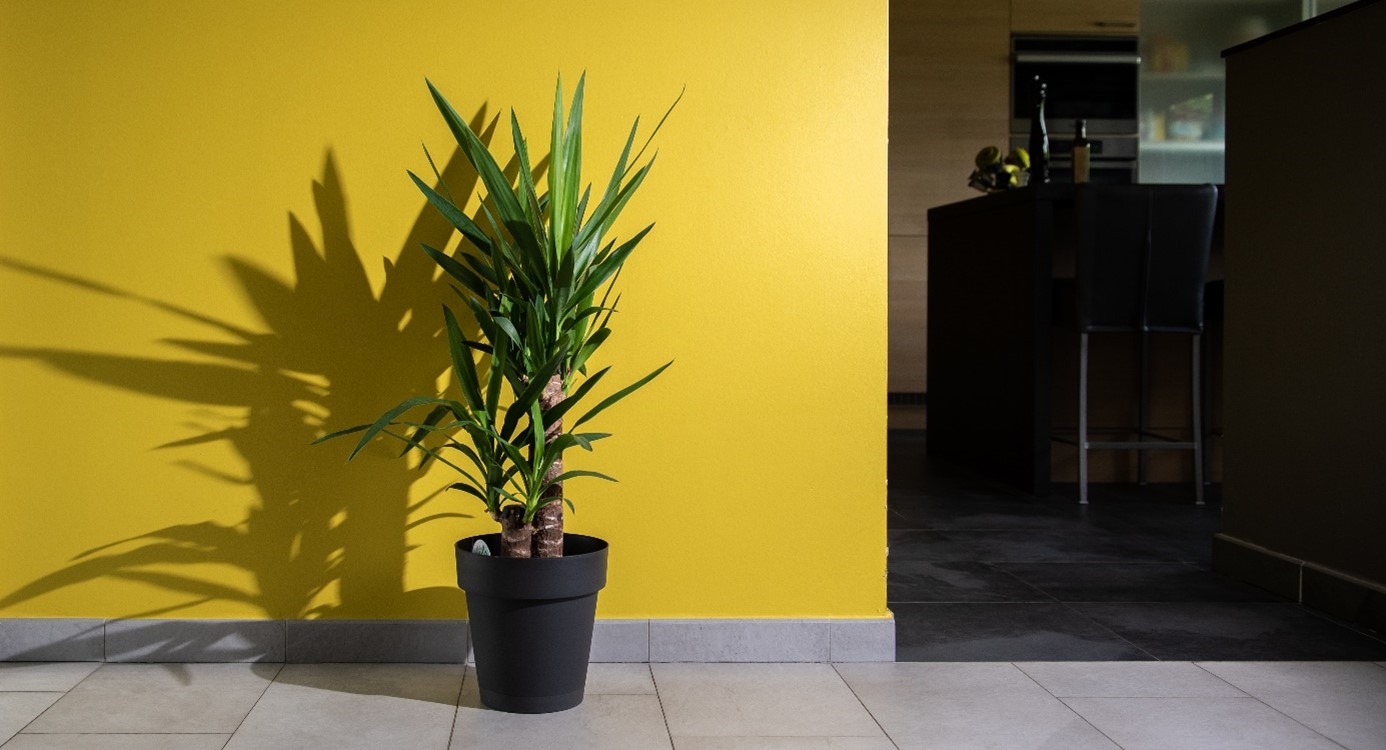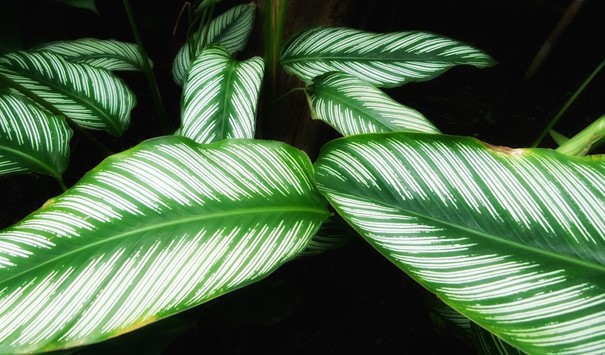There's no reason to deprive yourself of pretty green plants just because your rooms aren't bright enough. Some plants thrive in shade. Here's our selection.
Light intensity in a room
Every plant needs a minimum amount of light to live. But some plant species can thrive in shade, or at least tolerate it. They are all the more precious as they add a touch of color and bring life where light is lacking.
The brightness of a room varies according to its exposure, the season and its surroundings. The color of the walls can also have an influence, as can the size of the windows.
Tip - If you can read the paper at midday without having to turn on a lamp, you've got enough light to grow lots of houseplants.
Direct light only really exists within a meter of a south-facing window. In this case, you'll find that most houseplants burn quite easily. Only a few plants will thrive here, such as cacti, citrus, jasmine and croton.
Low-light points are located more than 1.5m from a well-lit window, or near a window obscured by trees or an outdoor patio, small or dark, or lined with blinds. A plant placed 2m from a window receives 4 times less light than if it were placed on the windowsill.
Northern windows offer the least light, followed by eastern and western windows, which are considered ideal for most houseplants.


Very few houseplants can grow without natural light. In this case, special lighting is required.

Five graphic plants for dark rooms
- Dieffenbachia, a magnificent tropical plant, features a wide variety of speckled or mottled leaves, in yellow and green or white and green. Although it grows well in dark rooms, it prefers a little bright, indirect light to avoid over-lengthening. Beware, it is toxic. Keep it out of reach of children and pets.


- Fatsia japonica, a shrub with large leaves, requires little light and moderate watering.
- Interior ferns: Since their discovery in the late 1800s, Boston ferns, Nephrolepis exaltata, have played an important role in interior design. These magnificent plants develop arching, bright-green fronds that look great in urns or baskets. They thrive in partially shaded areas, away from cold draughts or heat ducts. Water as soon as the soil is dry to the touch, and spray often over winter to minimize leaf drop.


- Mountain palm: this low-maintenance variety of indoor palm grows even in darker locations. The only drawback is that it won't produce its little clusters of yellow flowers in spring.
- Yucca thrives in dry, dark environments. When you think of yucca, sunny desert conditions tend to spring to mind. But indoors, they're almost as happy in a dark corner where you can enjoy their lance-shaped foliage and beautiful brown bark. The plant won't grow as fast in a dark room, but it'll be fine as long as you don't overwater it.


Five flowering plants that thrive in shade
Many plants native to the tropical forests of South America thrive in shade.
- Spathiphyllum, also known as "moon flower" or "peace lily", is native to the forests of South America. Easy and elegant, it can't stand the sun's rays. It blooms best when overwintered in the shade. It does, however, require regular watering.
- The indoor azalea will bring color to cool, dark rooms in winter.


- Orchids will brighten up any room in the house. These easy-care beauties keep their flowers for up to four months and are ideal for low-light areas.
- The long-blooming calathea or peacock plant (over 2 months) appreciates shade and humidity.


- Anthurium: Anthurium's bold flowers are a treat during the dark days of winter. These tropical beauties don't like soil that's too dry or damp, so it's important to keep the soil slightly moist at all times. Anthurium blooms best in indirect light, but also thrives in darker situations, although flowering may be limited.


Care tips for shade plants
Although each plant has its own watering needs, there are some maintenance tips that apply to all of them.
Acclimatize it - If the location is abnormally dark, your plant will need to acclimatize to it. Because even if a plant can live in lower light, sudden changes can cause health problems. That's why, when you bring it home, place it first in a moderately bright spot, then gradually move it to the desired location.


Don't repot just yet - Keep your plant in its original pot and simply place it in a decorative planter or basket. Water only when the soil is dry. Once a week, check the soil by pushing your finger as far into the earth as possible. If the soil is even slightly damp, don't water.
Just the right amount of water - When you water, give the plant a good soaking. If you only throw a glass of water on it, the first inch of soil may look wet, but the water hasn't managed to reach the roots evenly. The most effective way to water your plant is to take it to the sink or bath and soak it. Then let it rest and drain before putting it back in. Avoid pots or saucers without drainage. Plants are generally very sensitive to over-watering, and standing with their feet in water can be fatal.